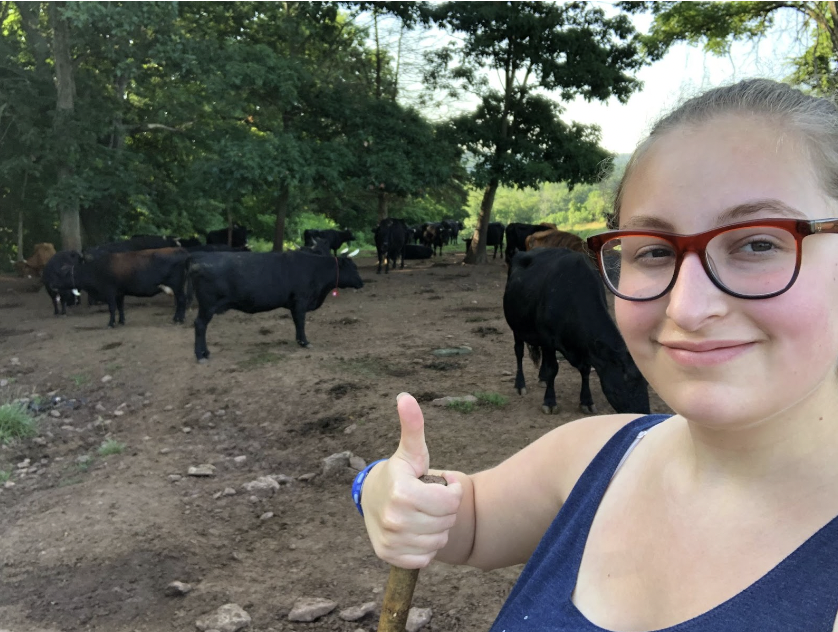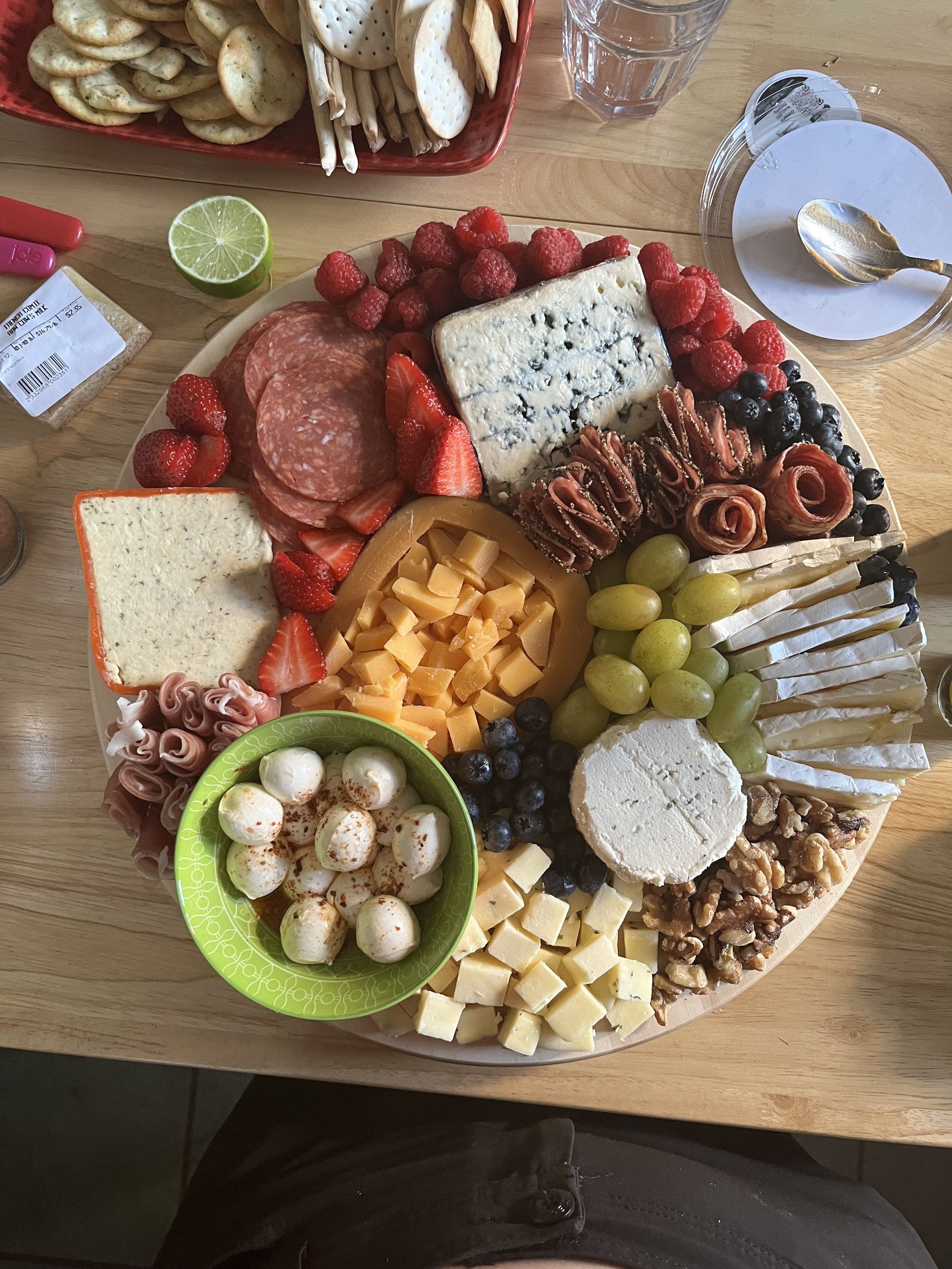Words on Curds: What is Cheese?
Author and Photographer: Olivia Rae Okun-Dubitsky
My name is Olivia Rae Okun-Dubitsky. I am a first-year, a writer, and an ex-cheesemaker.
“An ex-cheesemaker?”, I hear you ask. How does one become a cheesemaker, let alone an ex one?
Once upon a time, I was really obsessed with cheese. Like, really obsessed. Any conversation with me turned to cheese; I was like that kid obsessed with dinosaurs, except with fromology. So, when I was 16, I got my dream job and became a cheesemaker. I was taught everything from how to help a cow give birth, to the nuances of cheese mold cultivation, to the difference between washed and curd-washed cheeses. I learned enough to become apprenticed, and I began to milk cows, make cheese, and cheesemonger full-time during my summers in rural New Jersey.
I chose to leave the world of cheesemaking and go to college, because while I am a curd nerd, I am also just a straight-up nerd. I do not regret my decision in the slightest, but I do miss learning and talking about cheese. This is where Words on Curds comes in. If you want to learn about how to make cheese in your dorm, why cheesemaking changed from a majority-female to a majority-male industry, how to make a banger charcuterie board, the difficult environmental politics of cheesemaking, and more, this is THE column for you.
For this first entry, I feel I have to first answer one key question: why cheese? Why are we so obsessed with it, why are there so many different kinds, why have we been eating it for so long, why do we eat it?
Cheese is a scientific and chemical marvel: it takes something liquid and easily spoiled and turns it into something that can last for years. It is a great source of protein, calcium, and fat. There are almost 2,000 different types of cheese in the world. Cheese is incredibly varied, delicious, and versatile. It is no wonder, then, that it has become a mainstay on most dinner plates. But that did not happen overnight. People have been making cheese since the domestication of sheep, around 8,000 years ago. The legend that cheesemakers have passed down, a story my boss told me and that I am now telling you, is that an Arabian sheepherder was the original cheesemaker. He used an old sheep’s stomach as a flask and kept some milk in it overnight. A key ingredient in cheesemaking is rennet, which is originally found as enzymes in an animal’s stomach. (Though there are currently rennets made of mold bacteria; while they make cheese vegetarian, they often create a metallic taste. I’m not a fan of engineered rennet, but I digress.) The heat of the desert, combined with the rennet naturally present in the stomach flask, created the first cheese.
Did this actually happen? Who knows! But what matters is that this is when cheese first originated. It was then widely popularized by the Roman Empire, where hundreds of varieties of cheese were made and perfected. Cheesemaking then spread to Asia. There is evidence, though, that a type of cheese called rushan was made during the 1300s before European influence arrived. Rushan is a mozzarella-like cheese that gets stretched across bamboo sticks, similar to the hand-stretching of fresh mozzarella. The oldest known cheese is conciato romano, a terracotta-aged cheese seasoned with oil and vinegar. It then spread through Europe during the Middle Ages. Puritan farmers immigrating from England popularized cheese in the United States, and later in the 19th century, the wholesale cheese manufacturing industry was created by a group of Swiss immigrants in Wisconsin. Today, there are over 10,000 currently employed cheesemakers, 2.6 billion pounds of cheese were sold in 2021, and the industry continues to grow exponentially.
But, like…what is cheese, really? I feel like everyone knows what cheese is in a vague sense–it comes from milk–but most people, aside from cheese fanatics and food scientists, do not know exactly what it is. Let’s change that!
Cheese is essentially a coagulation of fat in milk. Most cheese has only a few ingredients: milk, rennet to cause the chemical coagulation, and some already fermented milk to get the enzyme reaction started. Mix those together, add some heat, and you have cheese! The liquids that are left are called whey. A quick fun fact: raw whey is so healthy and has such a high nutritional value that drinking it regularly makes you almost superhuman! Cheesemakers take a shot of it every day, and that is how they are able to keep up with the strenuous work. When I was regularly drinking whey, I would get cuts and see them stitched up in seconds. Crazy, but true!
But there are a million varieties of making basic cheese. The most mind-blowing thing I learned while an apprentice was that simply letting the milk mixture sit for an extra five minutes could create an entirely different cheese–it is that finicky. And those are just the basic modifications; you can add mold culture to make blue cheese, wrap the cheese in wood to give it a specific flavor, wash the rind in ale or cider, and a million other possibilities. You can shoot for the moon made of green cheese! We eat cheese because it is delicious, because it has been around forever, and because it is a practical dish.
I hope that is a helpful, incredibly brief introduction to why and how we eat cheese. Check the Bite blog every two weeks for cheese ruminations, cheesy recipes, and more. I’ll brie back with more.





